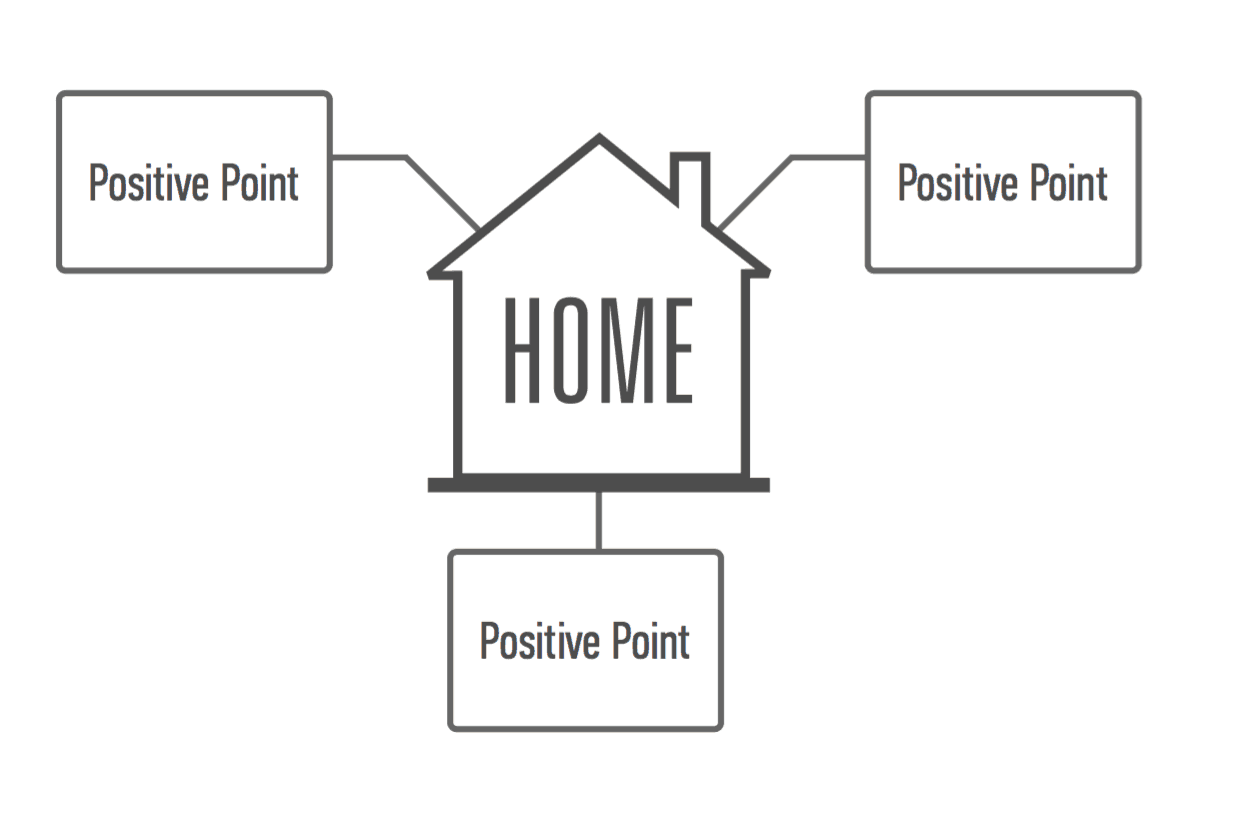
To tell your story, where do you begin?

In my workshops, we do a lightning-fast exercise to create a 7-second story on a Message Map.
A Message Map gives you an elevator speech of 23 words or less, so you can tell your story in 7 seconds. That quick start is crucial to break through short attention spans.
Observing people do this exercise sparked 4 ideas about where to begin to tell your story on a Message Map.
Change your point of view
The best Message Maps start with your customers’ viewpoint.
Imagine that you are the customer. When you tell your story, shift from a marketer’s mindset into the mindset of your audience.
Looking through the eyes of your audience, ask and answer: what’s in it for me? (WIIFM?)
Use everything you know about your customers – including buyer personas, demographics, pain points, worries, experiences and questions – to inform the message. The best Message Maps are always customer-centric.
Start with home base or positive points?
When teams work on a Message Map, they furiously debate what’s the best home base message. And they may find many options and many opinions about where the message should begin.
When you only have 23 words to work with, every single word matters. The home base is the most important part of your story, what people hear first.
So, you want it to be perfect. But that may mean you get stuck, trying to perfect home base.
If you get stuck on home base, start with the 3 or 4 positive points that support your home base. Articulating positive points can lead you to a good home base.
Think about it this way: Some reporters write a story and then find a headline. Others write a headline and subheads before they write a story.
Both approaches to tell your story can work. Do what works for you.
If you can write a home base first, start there. If you need to build up positive points first and then derive or deduce a home base, do that.
Either way can be successful. It’s most important to keep your ideas flowing. Don’t get stuck thinking that you’ve got to start to tell your story in one place or the other.
Lead with a statement or a question?
Consider both approaches when you create a home base for your Message Map.

Most Message Maps begin with a statement. Here are some examples:
- Walgreens helps women on the go survive the holidays with the best tips, ideas and how-to’s.
- West Virginia University offers a world-class graduate education with expert faculty, engaging classes, flexible and accessible resources, and career impact.
- AAA Northeast provides peace of mind for drivers, with savings on travel, roadside assistance and insurance.
But Message Maps also can begin with a question, when that’s a better place to start your story.
Questions intrigue your audience because they instantly start thinking about what the answer is.
- Got milk?
- Is your local area network ready for tomorrow? (Tellabs)
- How could you become a real-life hero? (Be the Match)
Get a team to buy into one message
If your team gets bogged down debating what the message is, this exercise can help them get unstuck.

Have each member of the team prepare his or her own Message Map.
Then tape all the Message Maps to the wall. Or put all the Message Maps on a whiteboard.
If there are 4 people on a team, you may discover 4 different ways to tell the story. That’s an embarrassment of riches.
Think about multiple Message Maps like this: If you move to a new house, you might try different routes to work. Over time, you’ll find out which one’s best. That becomes your routine route.
Message Maps work the same way. There are many ways to tell a story. By looking at several maps, you may find the best way even quicker.
Ask each member of the team to flag the best parts of each Message Map with a star or sticky note. Use those components to build one unified Message Map from all the ideas on the wall.
Iterate your Message Map over time
Draft a home base and positive points. Over time, edit each element of the map to sharpen it up.
The best ideas for Message Maps may come to you when you’re not at work and not under pressure to perform.
A great home base idea may come to you in the shower, or when you wake up tomorrow morning. Write it down, quick!
Keep your Message Map fresh and newsy
As things change with your company or your brand, revisit and refresh your Message Map. Plug in new components to keep your story fresh.
At a minimum, check your message every 3 months to see if you’ve found better words or ways to tell your story. That’s how you’ll become an even better storyteller with Message Maps!
Related Posts
News media interview? Be brief to be remembered.
Research shows that earned media, media coverage an organization did not pay for, drives brand awareness best. And, unlike paid media, it’s free. But to...
Extend Your Content Marketing Reach with Social Media
How to extend your content marketing reach with social media. Decide on a clear role for social media. Get employees, executives, and sales involved!...
Should writing be utilitarian, beautiful, or both?
If you’re a writer, or you work with writers, here’s a big question about the future of writing: · Should children learn handwriting in...
Speaking on the same topic repeatedly? Read these tips
Almost every conference, regardless of industry, requires that speaking sessions offer something new that the audience hasn’t heard before. But have you ever noticed...





